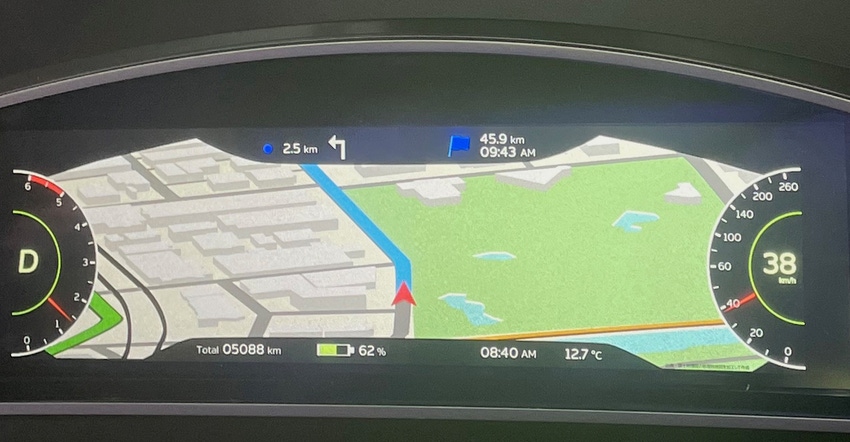Specialty Acrylic Polymer Perfects Screen Visibility
Annoying birefringence — the rainbow effect — could be a thing of the past for increasingly content-intensive in-vehicle displays thanks to a new resin from Asahi Kasei.
November 28, 2022

A specialty acrylic plastic developed by Japan’s Asahi Kasei promises to deliver a superior optical experience for both passengers and drivers when viewing in-car displays. With excellent transparency and close to zero birefringence from in- or out-of-plane retardation and photoelasticity (a measure of birefringence under mechanical stress), AZP resin produces molded parts that exhibit excellent optical properties without the need for special molding techniques, processing parameter conditions, or post-molding treatment. This also contributes to higher productivity and freedom of design, including the ability to fabricate curved displays.
Launched last year, AZP resin has now transitioned to the phase of commercial availability and is targeting applications in automotive heads-up displays (HUD) and center information displays (CID). Additionally, it is suitable for lenses and prisms in virtual reality/augmented reality (VR/AR) head-mounted displays.
Besides its optical properties, such as total light transmittance of around 92%, AZP also offers heat resistance as evidenced by its glass transition temperature (Tg) of around 133℃, weatherability, low density, and surface hardness characterized by a pencil hardness of around 3H. The resin can replace glass at a lower system cost on account of its injection moldability.
As the metaverse draws greater attention and related demand for VR/AR head-mounted displays grows, and with HUD and CID becoming more widely used for enhanced safety and convenience in the automotive field, low-birefringence transparent polymers are essential optical materials for compact design, lighter weight, wider angles of view, higher definition, and improved visibility.
Birefringence, also known as double refraction, is when a ray of light splits into two as it passes through certain types of materials. In optical terms, it presents as a rainbow effect visible to the human eye.
About the Author(s)
You May Also Like




